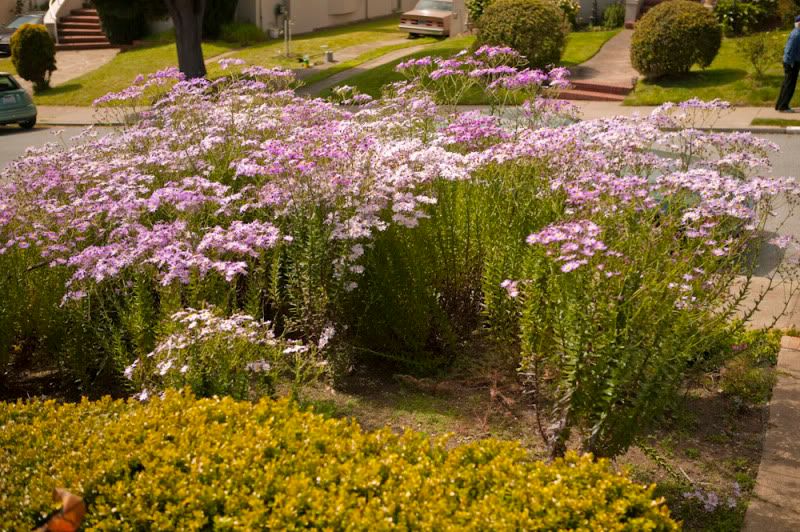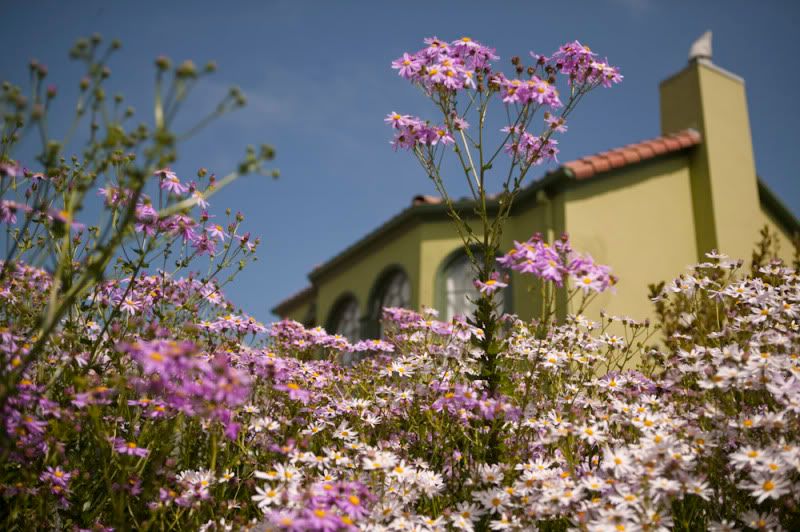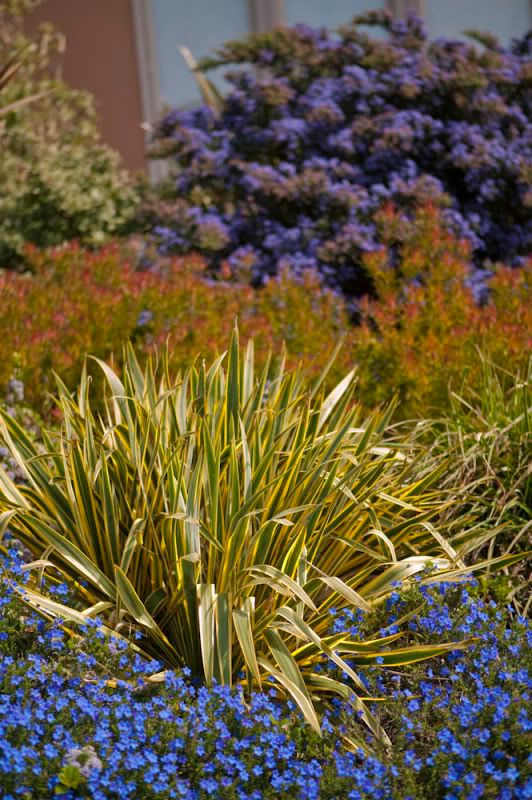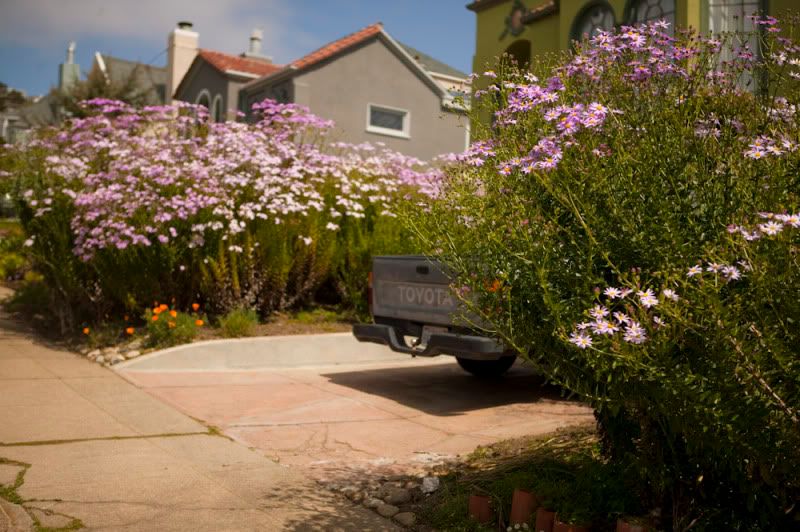If you saw 8-foot tall daisies planted to the very edges of the geometric template that usually holds a suburban front yard lawn, in an upscale community in San Francisco, wouldn’t you assume the owners of the house were a friendly sort, happy to answer knocks on the door inquiring about their forest of unidentified daisies? If so, like me, you’d be wrong. Gardeners see the world through chlorophyll-tinted glasses and can often make such erroneous assumptions.

These towering daisies with small, tough, leathery leaves were seen in the Glen Park neighborhood of San Francisco on March 24, 2010. The leaves were very stiff, almost succulent-like.
Across the street from the daisy forest house, a friendly gentleman tending an apple tree wanted to show me the tibouchina he just planted, and we chatted for a few moments. He said his friend, the owner of the daisy house, would love to hear from us, to go ahead and knock, which we did. It was difficult to politely excuse myself from this garrulous fellow, which seemed a positive indicator for a friendly reception at the daisy house. But it probably just wasn’t a good time for them. No ID was given, but they wouldn’t mind if we took some photos.

After this brief exchange held from a narrow crack in the doorway, the daisy house did send out a young male to the gate where the driveway meets the house, to watch us photograph the daisies, which I hadn’t noticed until the back of my neck started burning from the glare. I tried chatting him up, too, asking if he knew what kind of daisies they had allowed to fill with such ebullient profusion the entire front yard. “Nope,” was the one-word response. Not very chatty today, I guess. Perhaps they’re just fatigued by endless inquiries over the daisies. Attempting the horticultural equivalent of The Sartorialist was not as easy as I thought. Of course, any time there’s a door involved, the dynamics are much different. Out in the city versus at home in your sanctuary plays into it as well.

But at the end of the street was this lovely planting, with cobalt blue Lithodora diffusa and yucca in the foreground, leucadendron and ceanothus in the back. Only in San Francisco would lithodora look as happy as lobelia, or maybe lithodora just can’t take the alkalinity of SoCal soils. A successful Hortorialist entry. (That just sounds wrong.)

We headed back to our rooms at the Elements Hotel in the Mission district of San Francisco, really a hostel, no frills, but clean and a great (cheap) base of operations, then walked to Regalito for a wonderful meal (Tamales de Puerco for me). Just some tips for travelers to next year’s garden show.
(Edited 4/3/10 to thank Kelly/Floradora for kindly providing the identification of Senecio glastifolius to the UGC.)


Those daisies are Senecio glastifolius. A great plant but unfortunately a prolific reseeder. I doubt those were planted, rather they reseeded from some original planting and took over the yard. Looks pretty cool all out of scale like that though. We used to grow it at Annie’s until it was realized what a pest it made of itself. http://www.anniesannuals.com/plants/plant_display.asp?prodid=968&account=none
Thanks so much for the ID! It was quite the spectacle.
Wow. These are great and I don’t think I’ve ever seen them. I’m wondering if they’d grow in a pot?
Hi Jess — that might be a worthwhile experiment. You just might find your new favorite summer annual. And with some pinching back, why not try them in a pot? In your zone, there’s no danger of them naturalizing — see Kelly/Floradora’s comment and link.
You could also stay in North Beach where the lots of steps and walk ways wind thru beautiful gardens, like the Filbert Steps. The Green Tortoise is another great hostel centrally located in North Beach, just another tip for next year.